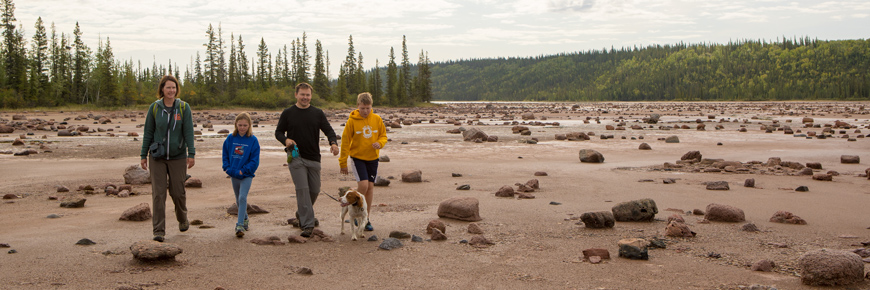
Wood Buffalo National Park
Northwest Territories
Date of Inscription: 1983
Wood Buffalo is Canada's largest national park, and the very embodiment of the space and wilderness that symbolize Northern Canada. Its 44,807 square kilometres include huge tracts of boreal forest and plains, and some of the largest undisturbed grass and sedge meadows left in North America. Those meadows sustain the largest free-roaming herd of bison, commonly known as buffalo, in the world.
Justification of outstanding universal value
Wood Buffalo National Park was designated as a World Heritage site by UNESCO’s World Heritage Committee under the following criteria:
Criterion (vii): The great concentrations of migratory wildlife are of world importance and the rare and superlative natural phenomena include a large inland delta, salt plains and gypsum karst that are equally internationally significant.
Criterion (ix): Wood Buffalo is the most ecologically complete and largest example of the entire Great Plains-Boreal grassland ecosystem of North America, the only place where the predator-prey relationship between wolves and wood bison has continued, unbroken, over time.
Criterion (x): Wood Buffalo contains the only breeding habitat in the world for the whooping crane, an endangered species brought back from the brink of extinction through careful management of the small number of breeding pairs in the park. The park’s size (4.5 million ha), complete ecosystems and protection are essential for in-situ conservation of the whooping crane.
Full description
Great rivers grace the park as the mighty Peace flows through the heart of the park and the Slave and Athabasca form the eastern border. Where the Peace and Athabasca issue into Lake Athabasca is the world's largest inland freshwater delta. The endless streams and wetlands of the delta accommodate countless waterfowl, including ducks, geese, swans, loons and grebes.
The park was established in 1922, largely as a home for the remnant population of bison that escaped the slaughter in the late 19th century that reduced the monarch of the plains from 60 million to a relative handful. The plains in the park are on the historic northern limit of the bison's range, and several thousand plains bison were shipped north to join the native wood bison herd already there. The park is also home to the world's last remaining wild flock of endangered whooping cranes.
Related links
- Anticosti, Quebec
- Tr’ondëk-Klondike, Yukon
- Writing-on-Stone / Áísínai’pi
- L’Anse aux Meadows National Historic Site
- Nahanni National Park Reserve
- Dinosaur Provincial Park
- Kluane / Wrangell-St.Elias / Glacier Bay /...
- Head-Smashed-In Buffalo Jump
- SG̱ang Gwaay
- Canadian Rocky Mountain Parks
- Historic District of Old Québec
- Gros Morne National Park
- Old Town Lunenburg
- Waterton-Glacier International Peace Park
- Miguasha National Park
- Rideau Canal
- Joggins Fossil Cliffs
- Landscape of Grand Pré
- Red Bay Basque Whaling Station
- Mistaken Point
- Pimachiowin Aki
- Date modified :